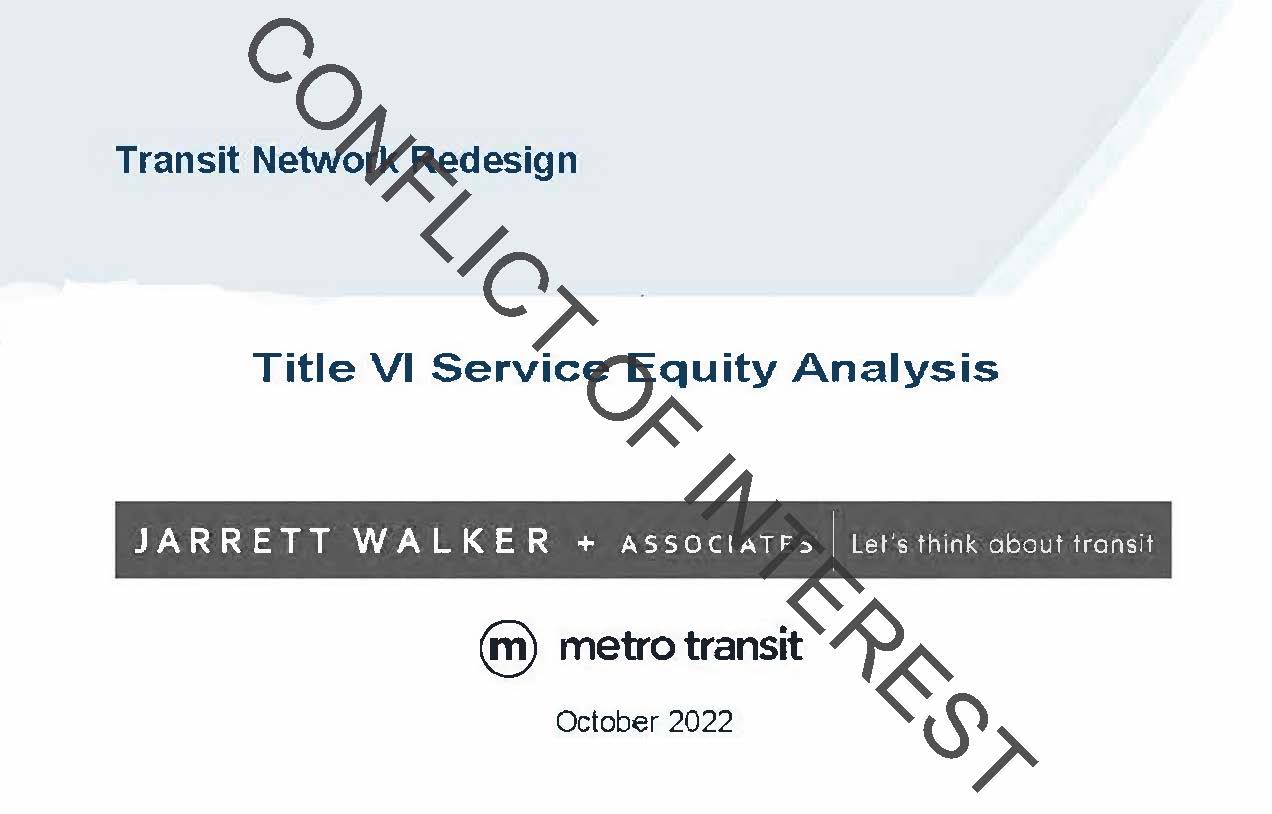A Conflict of Interest
Carrie Rothburd and Susan De Vos | January 11, 2023


A Cap Times article on December 7, 2022, quotes Mayor Rhodes-Conway as referring to an “extensive and thorough third-party” analysis of Metro’s system redesign. Such a review did not happen but should have. Third-party review is a basic tenet of good governance, guarding us against the tendency to confirm our own biases. That is why Madison ordinances are sprinkled throughout with "no conflict of interest" clauses. Metro should not have designated the same people who redesigned its system to also perform the Equity Analysis of that plan. Madison prides itself on levying taxes for the common good. Yet Metro justified the in-house review by claiming that doing so saved both time and money. An estimated cost of $50,000 compared to Metro’s $50 million-plus annual budget and the loss of legitimacy? Only an independent review can assess that Metro is not hiding something to claim that “there is no reason to believe that the analysis, done in some other way, would produce any significant differences.” Because there is reason to believe. That is the whole point. Then to claim that objections only came from “a few interested parties who have been consistent in their opposition to the Transit Network Redesign?” What about all the people from under-represented populations who testified at the public hearing? These “interested parties” came out from all across Madison to speak to the redesign and ask sincere questions about the methodology used in the Equity Analysis. They expressed doubt that the redesign “expressly and intentionally improves service for low-income communities and communities of color,” to quote the mayor from the Cap Times article again. Metro’s response, that “the needed demographic data is not available” for a better analysis should be the very reason that Metro should dig deeper. That the software used “assumes that populations in [Census] block groups are uniform and that only the portion of a block group within a quarter-mile buffer of a bus stop is served” is problematic. Block groups are up to a mile square, are not uniform and no one should have to walk more than one-quarter mile to the bus, especially those reliant on public transit. Metro’s refusal to go the extra mile is puzzling as the Remix software used in the analysis boasts on its website that it takes less than 10 minutes to run. Metro might have used Remix a second time on Census block data for a finer geographic analysis to ensure that the redesign did not contain a socioeconomic bias. They might have reevaluated the downtown area excluding students to avoid the distortion caused by their inclusion as low-income individuals. Metro might also have corrected the maps showing how far a rider can travel in a set unit of time on the old system versus the redesigned system, which by Metro’s own admission, were incorrect, and led to conclusions about the redesign�s access by Madison’s peripheral communities. The real story behind the Equity Analysis may have less to do with ensuring transit equity and more to do with the pretense that the bus rapid transit (BRT) project is separate from the bus redesign. Planners had to create a new bus system within the constraints of Metro’s 2019 budget while simultaneously finding funding for BRT. In 2019, increased transit access meant adding BRT to complementary coverage-based routes. The $40 Vehicle Registration Fee was passed in 2019 to help do this by adding an estimated $4.2 million in annual funding to Metro’s operations. However that money has been allocated elsewhere, and now Metro must cut back on regular bus service to fund the BRT. Public transit is good for the environment and an equalizer for community. Madison needs funding for coverage, BRT, and regular and meaningful equity analyses to ensure that we listen to and meet the needs of those who rely on it the most. The current Equity Analysis does a disservice to the goal of moving Madison toward greater equity and a more environmentally sound future where more of us use public transit. The price of not having an independent third-party perform Metro’s Equity Analysis may be far greater than the $50,000 Metro saved by performing it in-house. |